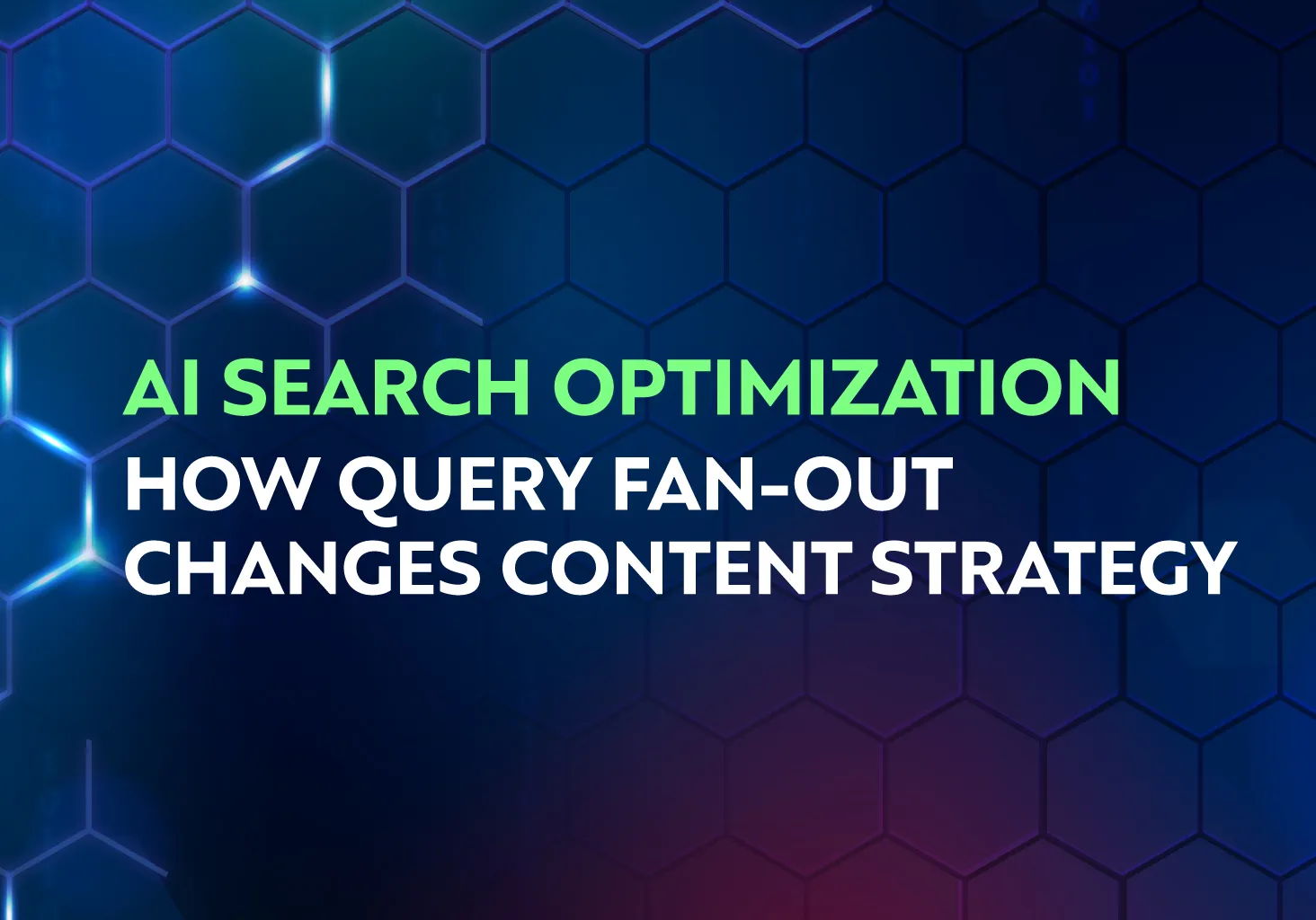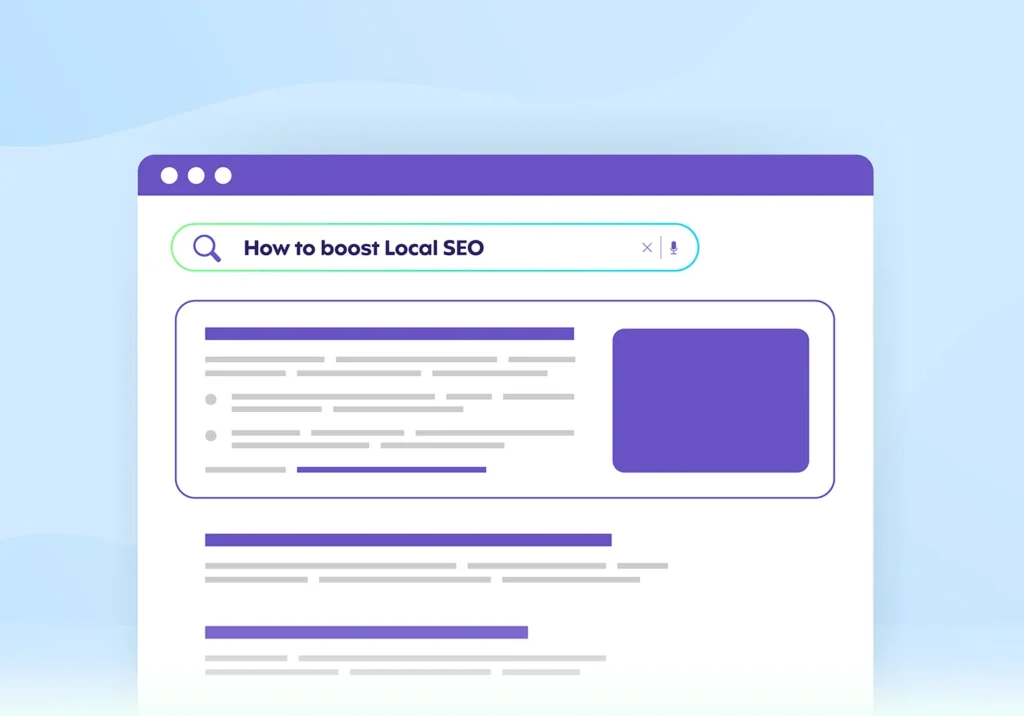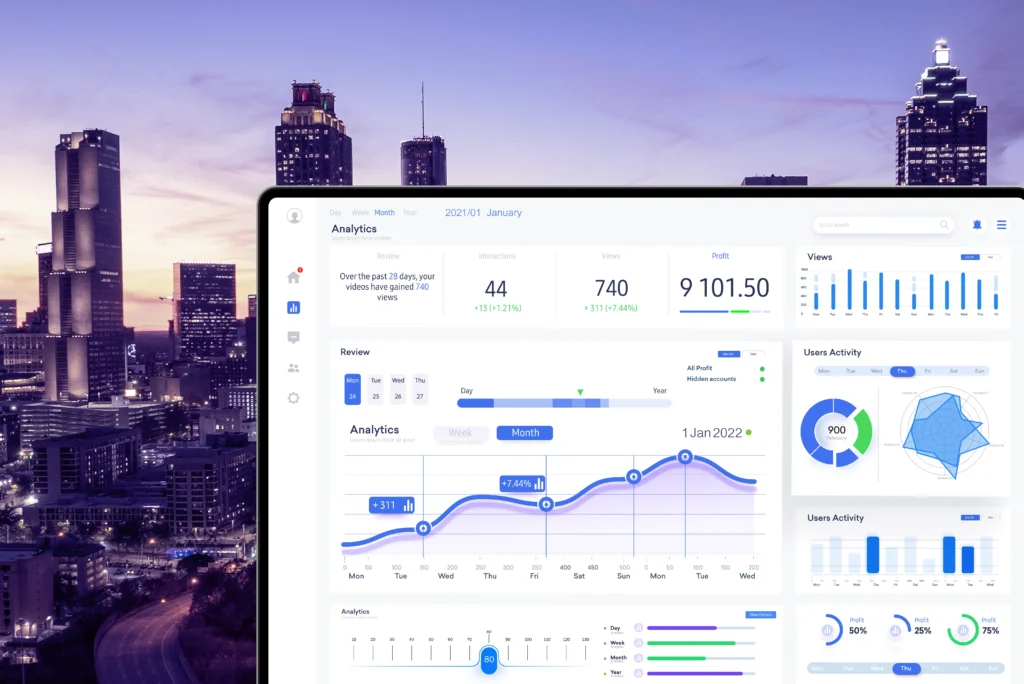Digital marketing used to have a standard blueprint. You’d optimize for Google or other search engines, work to rank well, and that’s how most people would find you. It wasn’t simple, and the rules changed without warning, but the overall strategy was fairly clear.
But now people are bypassing traditional search entirely, asking AI tools like ChatGPT everything from local business tips to product reviews and more. Your search rankings still matter, but you also need to make sure AI tools can find and reference your content.
When building a site, we need to plan for these changes in how people search the web. Let’s look at what works for AIO (artificial intelligence optimization), how it can build on your existing SEO strategy, and why purely AI-generated content tends to do more harm than good.
Tune Up Your SEO/AIO
Clockwork is here to help you keep up. We’re offering a free SEO/AIO audit to show how your site performs across both search engines and AI tools.
How AI Actually "Searches"
|
AI Tool
|
How It Searches
|
Best For
|
Learn More
|
|---|---|---|---|
|
ChatGPT
|
When browsing is enabled, it uses Bing to retrieve content and summarize it
|
Step-by-step guides, general explanations, fast takes on recent events
|
|
|
Perplexity
|
Real-time search across multiple sources with inline citations
|
Research, up-to-date facts, transparent sourcing
|
|
|
Claude
|
Web browsing (when enabled) – tends to be cautious and context-sensitive
|
Balanced analysis, nuanced or sensitive topics
|
|
|
Gemini
|
Tied into Google's real-time search capabilities with strong data awareness
|
Trending searches, live events, and anything Google ranks highly
|
When you ask about something recent or outside the AI’s training data, these tools ask search partners (usually Bing) to fetch up-to-date answers. It’s like a smart assistant that doesn’t have direct access to search engine databases but can request their help. The main difference is the result – one conversational answer instead of multiple ranked links.
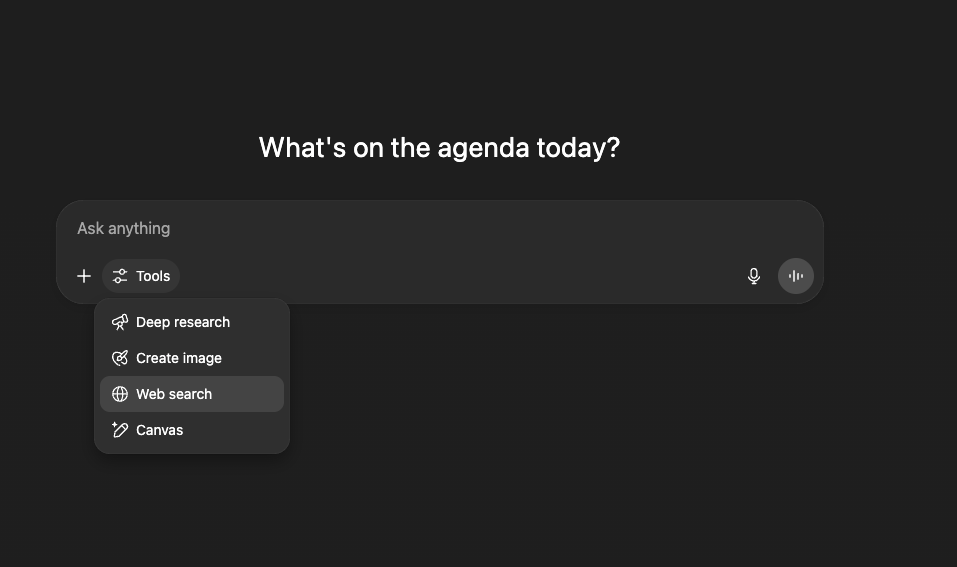
Here’s what happens when these AI chatbots perform a real-time search:
- Initiate the real-time search (if browsing is enabled)
- Retrieve and read the raw text content of web pages
- Parse and summarize content, looking for clearly written and well-structured answers
- Interpret structured data and meta tags (if visible), such as schema.org, JSON-LD for products/FAQs/events, and meta tags like og:title and description
As OpenAI explains, ChatGPT doesn’t just search once. Your conversational question turns into several targeted searches to get better results. “What’s the best laptop for work?” becomes multiple queries like “business laptops 2025” and “laptop reviews professional use.” This behind-the-scenes process is what’s known as query fan-out.
What is Query Fan-Out?
This fan-out technique allows AI to explore different angles of your question all at the same time. That might mean performance requirements, user reviews, price ranges, and brand comparisons all in one. The result is a deeper and more contextualized understanding that goes beyond what any single search can usually provide.
This new data-seeking strategy allows your search to “dive deeper into the web than a traditional search” because it’s checking multiple related topics instead of just one. It’s basically anticipating and then doing the legwork you’d normally do with several separate searches.
So your existing SEO work still matters because AI tools are doing search queries behind the scenes, just like Google does. They can’t peek directly into Google’s database, but they can read the labels and organization on your pages, looking for quality signals like clear headings, credible authorship, and others I share below. Since search engines rely on that same structure, AI tools indirectly benefit from your existing optimization work.
These new tools aren’t going to do away with websites or replace the need for good content. It’s just a new interface between people and how they access what already lives on the web.
Optimizing Your Content for AI Search
Since AI tools are looking for those same quality signals, what exactly should you focus on? Getting cited by AI typically hinges on relevance, clarity, and credibility. That last one is huge because AI tools pay close attention to Experience, Expertise, Authoritativeness, and Trustworthiness (E-E-A-T).
If this concept sounds familiar, it’s the same decision-making framework Google uses to serve up search results.
Relevance (Get to the Point)
AI tools want content that directly answers our questions. Since they’re using query fan-out to explore multiple angles of each question, they scan through pages looking for headings, snippets, or sections most likely to contain useful information.
“Good content” for AI often starts with front-loaded answers, especially for FAQ-style or how-to content. For example, “To renew your passport, you’ll need a completed DS-82 form, a recent photo, and payment. Here’s the full process:” gets right to the point. It’s best to avoid long-winded intros or irrelevant storytelling.
Another good tip: If you’ve already made a point, you usually don’t need to keep repeating it unless you want to emphasize something important or clarify a complex concept.
Clarity and Structure (Make It Easy to Digest)
Even though AI search doesn’t rely on structured data directly, clean layouts and semantically structured HTML are easier to parse. Like us, they love bullet points, short paragraphs, tables, and summaries – and dislike pop-ups and ads that cover your content.
Beyond just the words on the page, here’s what to focus on:
- Clear headings and subheadings (H1, H2, H3) that guide the flow and help AI quickly locate relevant sections
- Short paragraphs that are easier to parse and extract meaning from when scanning
- Logical flow where information follows a coherent order (introduction → explanation → conclusion or steps 1-2-3)
- Consider adopting llms.txt files, simple text files you add to your website’s root directory, to help AI tools navigate and prioritize your content
Try to be precise in your writing without getting overly technical unless your audience demands it. Avoid vague phrases like “it might help” without evidence, and use concrete examples and real data.
And while tempting, try not to let AI write everything for you. Studies show AI tools are quickly homogenizing how people write, meaning your authentic, expert voice is a way to stand out.
Credibility (The #1 Factor)
Here’s where E-E-A-T comes into play. While being relevant and clear will get AI tools to notice your content, credibility is what makes them actually trust it enough to cite.
What makes credibility a top decision factor? AI tools aren’t just looking for any answer. They want trustworthy answers from sources they can confidently cite. Like search engines, they prioritize content from sources they recognize as authoritative:
- Official websites (.gov, .edu, company domains)
- Academic or peer-reviewed journals
- Mainstream, reputable media
- Expert-led blogs or company websites
- Well-known sites that are often cross-referenced or cited elsewhere
They also look for clear authorship information. Named authors with verifiable expertise, professional backgrounds, author bios, and links to LinkedIn or university pages all signal credibility. Contact information and organizational backing also hold weight.
For time-sensitive topics like tech releases, election rules, or sports, AI tools have a recency bias and prioritize newer pages with timestamps and clear publication dates. This makes sense – the most recent news story is typically the most accurate. Building credibility takes time, but it’s what separates content that gets cited from thin content that gets ignored.
What Dings You with AI Search (The Don't List)
- Pages overloaded with ads or pop-ups
- Low-quality, vague, or obviously AI-generated content with thin ideas
- Clickbait titles or irrelevant keyword stuffing
- Unknown blogs or affiliate sites pushing products with little factual grounding
- Sites with no clear authorship or contact info
- Forums or comment sections (unless explicitly useful)
Where SEO and AIO Overlap
It turns out much of what works for SEO carries right over to AI optimization. Since AI tools convert conversational questions into multiple searches through query fan-out, your existing keyword research is still valuable. You just might use it differently now, focusing on how to craft readable content that answers those search queries naturally.
The technical SEO foundation also matters. Recent data from Search Engine Land shows AI crawlers represent 28% of crawler volume but are 47 times less efficient than Googlebot. This means clean HTML structure, proper headings, and fast load times – the stuff we build into every SEO strategy – helps with both traditional search and AI citations.
The main difference is that AI tools care more about natural language and actual helpfulness than backlinks or keywords, but the content quality standards are essentially the same.
The Risk of AI-Generated Content (The "AI Slop" Problem)
Here’s the irony: while AI tools can help you generate content, they often deprioritize generic AI-written content. Not because AI automatically detects AI, but because superficial AI writing lacks the depth, specificity, and genuine expertise that search engines and AI tools value.
The problem with everyone sounding the same is getting worse, with words like “delve” and style habits like excessive em-dashes getting copied across the web. This so-called “AI slop” (generic, formulaic content that all sounds the same) is flooding the internet and making everyone’s writing feel increasingly robotic, interchangeable, and stale.
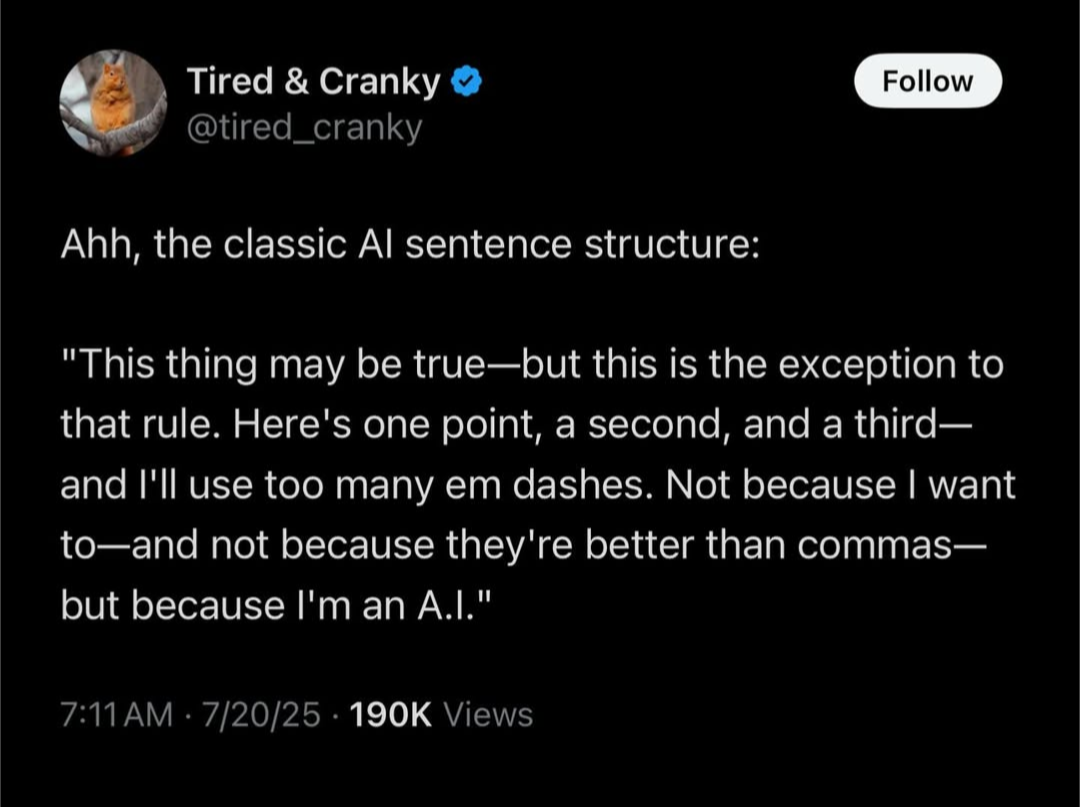
We’ve seen this directly with our clients. Overwritten AI copy without human fact-checking, editing, or expertise falls flat in Google rankings, AI citations, and user engagement. But when our team leverages AI for research and ideas, then layers in real expertise, careful editing, and the necessary human touch, the results feel like an entire research and editorial staff chipped in.
Simply put, unchecked AI writing doesn’t satisfy search engines, AI tools, or human users. Just like we approach AI-generated images for websites, the key is using AI as a strategic tool guided by human expertise, not as a replacement for it.
Get Started with AIO: Practical Next Steps
The good news is you don’t need to tackle everything at once to get started with AIO. Based on everything we’ve covered, here’s where to focus:
Content and Structure
- Front-load your answers, especially for how-to content
- Use clear headings and short paragraphs
- Add author bios and credentials to build credibility
- Include publication dates and update notices for time-sensitive content
Technical Foundation
- Implement schema markup for your key content types
- Ensure clean HTML structure with proper heading hierarchy
- Optimize for Core Web Vitals (page speed, layout stability)
- Set up proper semantic markup
What Works for All Search
- Continue your keyword research – AI tools use it too
- Focus on E-E-A-T signals (experience, expertise, authoritativeness, trustworthiness)
- Create content that directly answers common questions
- Include publish dates and update notices for time-sensitive content (AI favors fresh)
- Build links and citations from authoritative sources
Quick Note on AI and Ethics
As we focus on AI-driven search, it’s worth remembering our responsibility as content publishers. AI tools are shaped both by their training data and the live information they find when searching. They can amplify bias, misinformation, or gaps in representation from either source. They can also hallucinate, generating fabricated information that appears authentic.
By focusing on fact-checked, inclusive, and transparent content, we’re not just improving our search visibility. We’re making sure AI tools have quality information to share. AI may be changing how people access knowledge, but human integrity still shapes what’s worth finding. As we embrace these tools, we should also consider the environmental costs of these energy-intensive systems and our role in building an increasingly AI-mediated world.
Putting It All Together
Optimizing for AI search is essentially just SEO with some new priorities and technical considerations. With query fan-out changing how these AI tools track down content, having an AIO-ready website gives you the best shot at being discovered across all search types.
From SEO to AIO: Let’s Get You Ahead of the Curve
Search is evolving fast, from Google to generative AI. Are you confident that your SEO/AIO strategy is delivering results? Get started with a free SEO/AIO audit and make sure your site’s ready for the next era of discovery.

